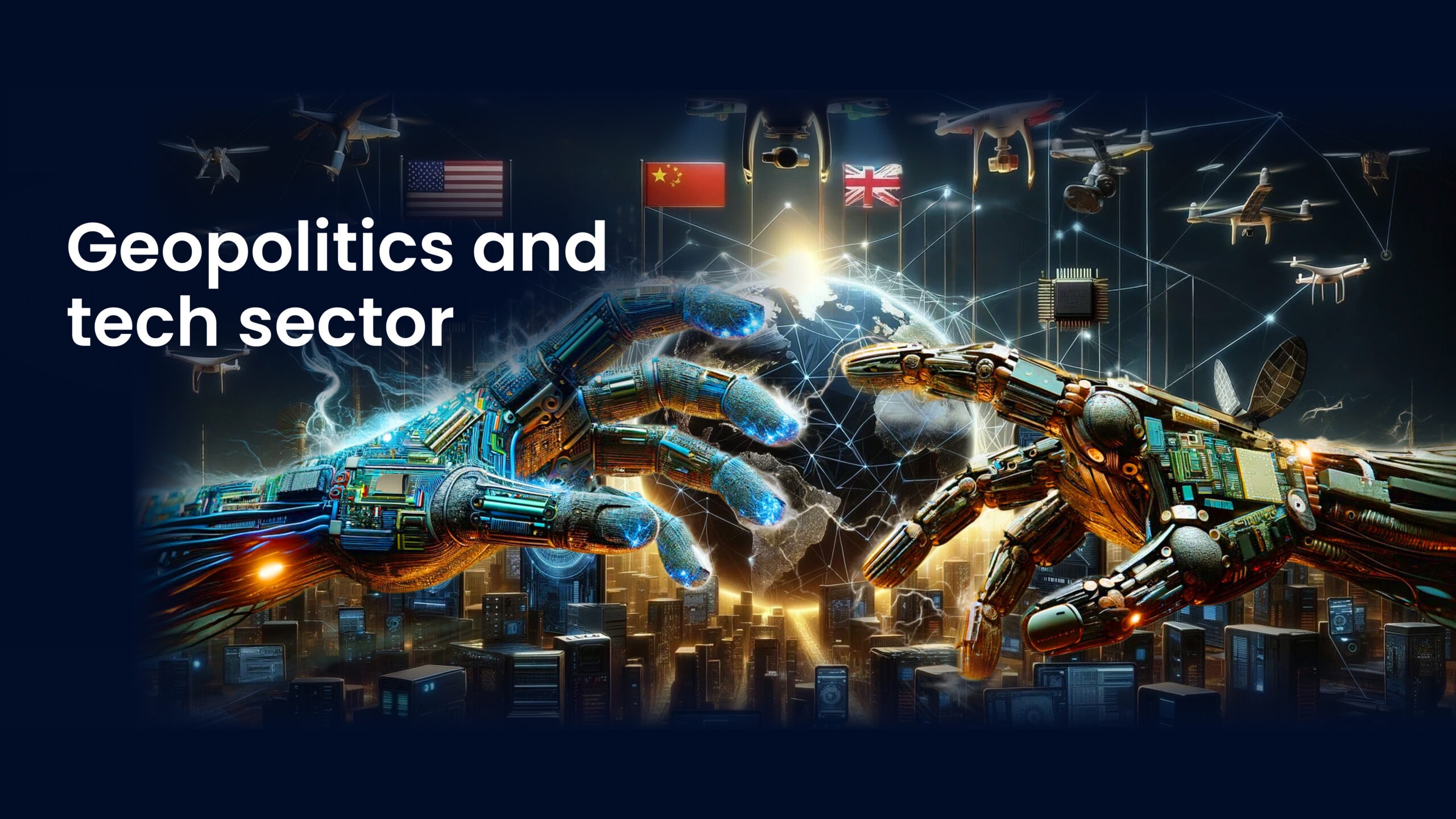
Every global disruption is an investor in technology development. The shift in WWI in terms of technologies was immense—the soldiers rode in on horses, and they left in airplanes. Advancements that would have happened anyway happened at a much more rapid pace, and they happened according to the priorities of warfare.
Content:
- The new world leader
- Israeli tech leadership shaping the region
- Microchips confrontation: USA and China
- The role of technologies in the Russia-Ukrainian war
- Modern warfare as a catalyst for new technologies
- How do geopolitics affect the IT market?
We witnessed the fast growth of the tech sector during another global disruption – the COVID-19 pandemic. According to CNBC, the top seven tech companies added $3.4 trillion in value in 2020 due to the pandemic. However, “instead of rewarding growth, investors are now rewarding profit,” as Jeff Shulman, Professor at the University of Washington’s Forster School of Business, said in his interview with CNBS, which means that “layoffs are going to be the new normal.”

The new world leader
Ian Bremmer, an American political scientist, explained during his talk at a TED conference that the era of a one-polar or two-polar world is over, as today we have a new world leader – technology companies.
These are ten or twenty tech giants that control the cyber domain. “If it weren’t for those technology companies,” he says, “Ukraine would have been fully offline within weeks of the war.”
“Tech companies determine whether Donald Trump is able to speak with hundreds of millions of people in real-time as he runs again for the presidency. It’s social media platforms and their ability to promote this information and conspiracy theories. Without them, we don’t have riots in the Capitol on January 6.”
And with the development of technologies, we have several possible scenarios:
- There might be a technology cold war between the USA and China with the silicon curtain dividing the world, and some experts believe it is already happening at full speed.
- There might be a digital global order with all the pros and cons of globalization.
- And there can be a new era of data colonialism, where those who control the data control the world. And we will ask ourselves if the country is independent if it is a data colony.
As there is no “pause button” for explosive technologies, let’s stop for a bit and think about whether there’s even a possibility where technologies can be used for limitless possibilities and freedom of people worldwide.
According to Yuval Noah Harari at the Athens Democracy Forum in 2022, technologies can be used to boost democracy and invest in democratic institutions. To do so, they have to be used in other ways, not like they are used today.
Now, there are corporations that give tools to the governments so they can use more surveillance and control their citizens. However, it could be technologies that control governments, for example, to spot governmental corruption or corporations. However, these tools have not been developed because the main actors (governments and corporations) are not interested in developing them.
Israeli tech leadership shaping the region
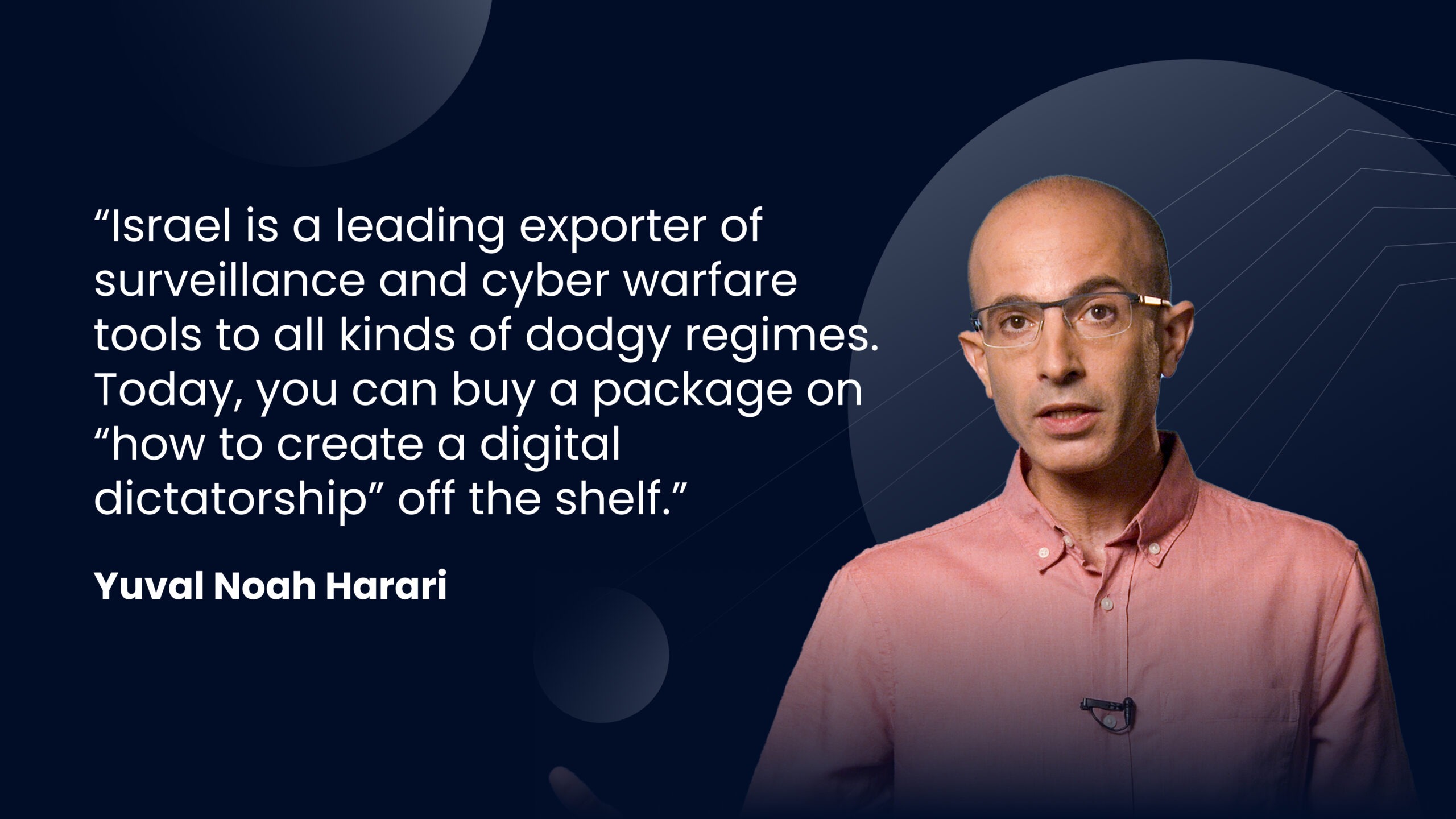
Sometimes, very harmful technologies can be developed in democracies and then be exported elsewhere. “Israel is a leading exporter of surveillance and cyber warfare tools to all kinds of dodgy regimes,” Harari says. The position of Israel in the region has significantly strengthened over the last decade. Much of it is due to the technological changes because today, Israel is a leader in particular technologies. Several agreements with UAE and other Gulf states are partially explained by the desire of these states to enjoy the fruits of Israeli cyber security and surveillance technologies. It is thanks to surveillance tools that Israel can today control millions of people in neighboring Palestina against their will much more effectively.
And this is just one example of how technology changes the geopolitical balance of power.
However, the focus of corporations on profit and not long-term perspectives leads to some drastic results. Today, “you can buy a package on “how to create a digital dictatorship” off the shelf.” Harari says. Countries don’t have these technologies locally, but they can buy tools to operate the system from elsewhere.
Microchips confrontation: USA and China
The most extensive attention has been brought to the confrontation between the USA and China in their cold war over semiconductors. “Semiconductors are an essential area of competition between China and USA,” “Chip War” author Chris Miller states. And he has reasons to say so.

A bit of chronology:
- In 2014, China released policy documents targeting semiconductors as a core technology. Subsidy funds released by their government boosted the Chinese chip industry to stop importing technology from competitors.
- In 2022, the USA tried to clamp down on China’s access to chip technology. Export restriction in October 2022 was to boost the US chip market. Its goal was to slow down China’s progress on semiconductors and AI.
- In response, in July 2023, China restricted exports of 2 minerals used in high-performance chips.
- In September 2023, Huawei launched the Mate 60 Pro with an advanced chip made by Chinese domestic chip maker SMIC. At the same time, Apple 15 PRO was released, containing a chip by Taiwan chip maker, which is considered the most advanced in the world.

As China produces more ships, more planes, and more missiles than ever, the USA tries to maintain a technological edge, and the Biden Administration claims that the sanctions and export restriction are a question of national security, stating that there is a connection between chip-making and defense capabilities.
Nvidia, Intel, and AMD are regulated, so the GPUs sold to China are below the technological threshold, so selling them is still legal. Nvidia is not to export its GPU for about $5 billion due to new regulations.
Export control slows China, but it won’t permanently stop it from making advances. As of May 2024, AI is a race between the US and China.
Chip war from the Chinese perspective
“From Beijin’s perspective, these bans represent not “responsible competition” but the existential threat, as China uses AI for food security, climate change control, etc.” Kendra Schaefer, Global Director of Tech Policy Research, Trivium China, said in Bloomberg New Economy Forum in November 2022.

Today, there are two battlefields between the USA and China. Battlefield # 1 is chips, and battlefield #2 is data. Recently, China released a document stating that it can stop exporting data abroad if such export would lead to new geopolitical hazards. The country hasn’t used this pact yet, but it certainly can, which would lead to another loop of technological confrontation between the two nations.
Marko Papic, the author of “Geopolitical Alpha,” says that we are too much concentrated on the chips and don’t look outside the box, giving as an example the fact that China has already funded $15 bln into quantum computing and will continue developing this area.
Taiwan invasion?
Some people believe that all China needs to keep up with chip conductors development of the West is to invade Taiwan. But will it really help? Here’s what Gary Rieschel, Founding Managing Partner of Qiming Venture Partners, says:
“60% of senior TSMC (Taiwan Semiconductor Manufacturing Company Limited, premier semiconductor manufacturer in the world) executives are Americans, and the day China invades Taiwan, they leave. All the people maintaining the advanced pieces of equipment in Taiwan are foreigners, and they’re gone when/if China invades. So, what China will have is a bunch of very beautiful and expensive equipment that nobody knows how to run.”
“Semiconductors don’t grow on streets in a particular Taiwanese climate,” Papic adds. “It’s more complicated.”
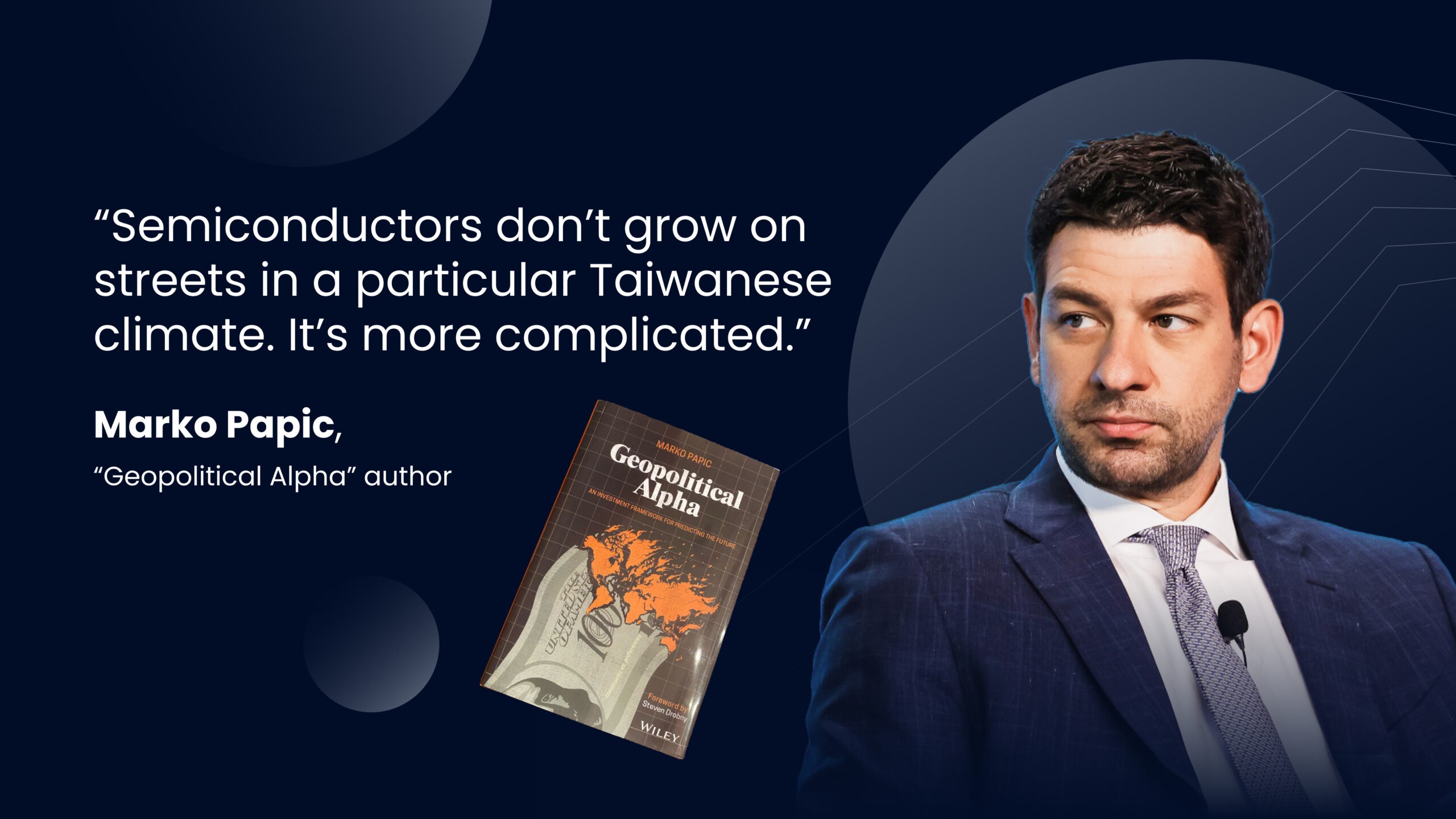
TSMC is considered a Taiwanese “silicon shield.” If China invades and TSMC is blown up, China has no access to the semiconductors. However, if the USA fully removes China from chips, the shield wouldn’t work, would it?
Invading Taiwan for the sake of semiconductors is stupid and has no logic to it—the same as it was with Russia invading Ukraine. The brightest minds didn’t believe this would happen because it was such a stupid thing to do. Alas, sometimes political leaders do stupid things.
The role of technologies in the Russia-Ukrainian war
You can say that the war in Ukraine is fought with Abramses and Himarses, the weapon that was developed decades ago. However, there are also new technologies, like AI-based drones and satellite Internet, that make a difference and give Ukraine an unprecedented technological edge that helps it fight back a huge Russian army.
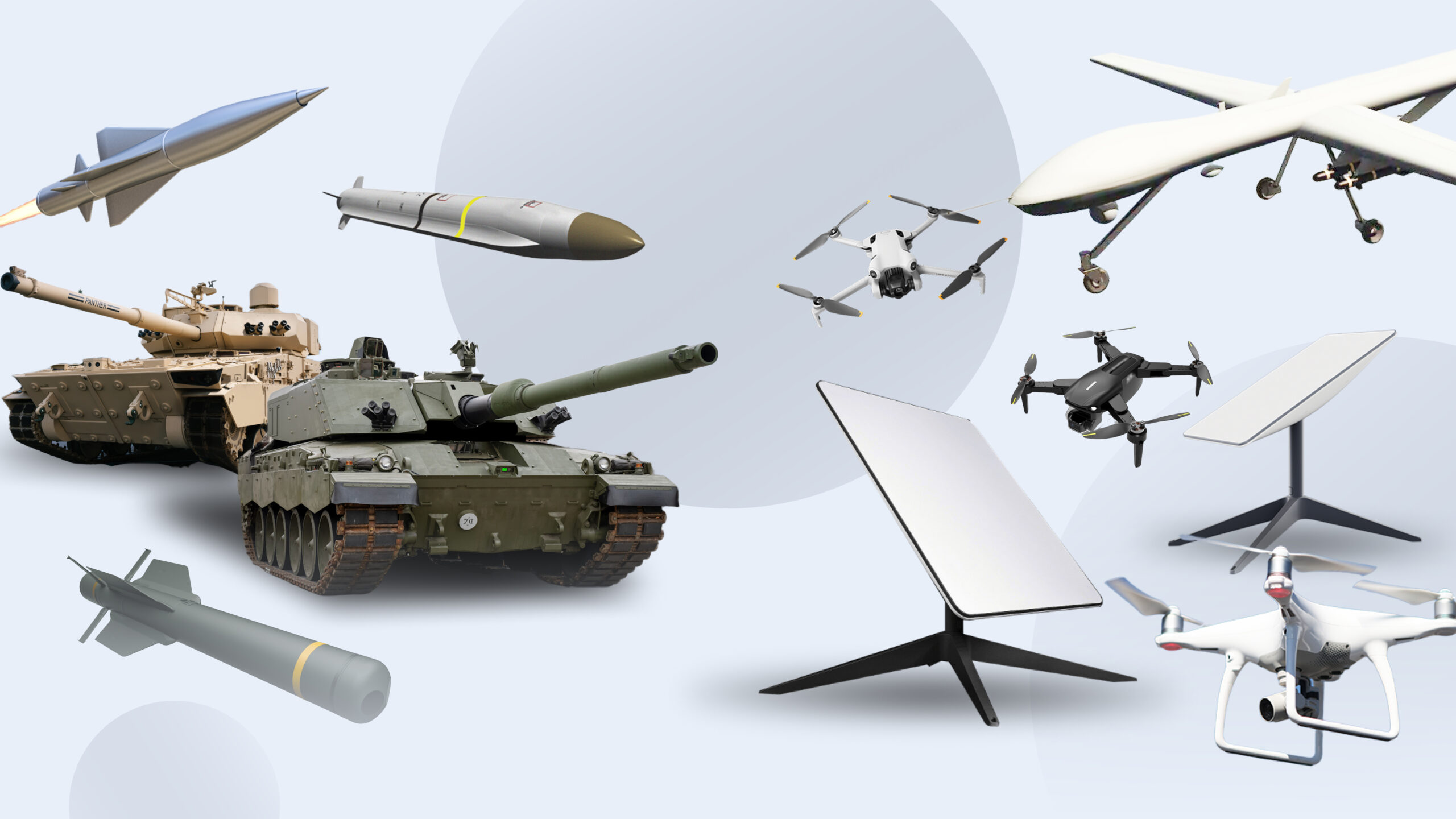
Modern technology has become a powerful tool on the battlefield in Ukraine. It empowers Ukraine to fight more efficiently against a larger opponent, fosters international support, and plays a vital role in keeping the world informed about the ongoing conflict. Here are some of the technologies used in this war:
- Communication and intelligence gathering. Secure communication platforms like Starlink from SpaceX provide reliable internet access for Ukrainian forces, helping them to coordinate troop movements and share intelligence. Social media platforms are used to rally public support and document potential war crimes.
- Drone warfare. Relatively inexpensive yet highly effective drones are used for reconnaissance, targeting enemy positions, and even launching attacks. This “asymmetric warfare” helps Ukraine counter Russia’s larger military resources.
- Crowdsourcing and open-source intelligence (OSINT). Ukrainian civilians are utilizing apps and online platforms to report enemy movements and identify potential targets. This crowdsourced intelligence is valuable for Ukrainian forces.
- Cybersecurity. Ukraine has received significant support from international allies to bolster its cybersecurity defenses, mitigating the impact of potential Russian cyberattacks on critical infrastructure.
Apart from that, social media and news platforms keep the world informed about the war in real time, fostering international support for Ukraine and pressuring Russia. At the same time, technology platforms enable fast and efficient fundraising for humanitarian aid, providing vital resources to Ukrainians affected by the war.
Wars do provoke technological progress, and we are about to see more technologies put to the purposes of killing and saving people.
Modern warfare as a catalyst for new technologies
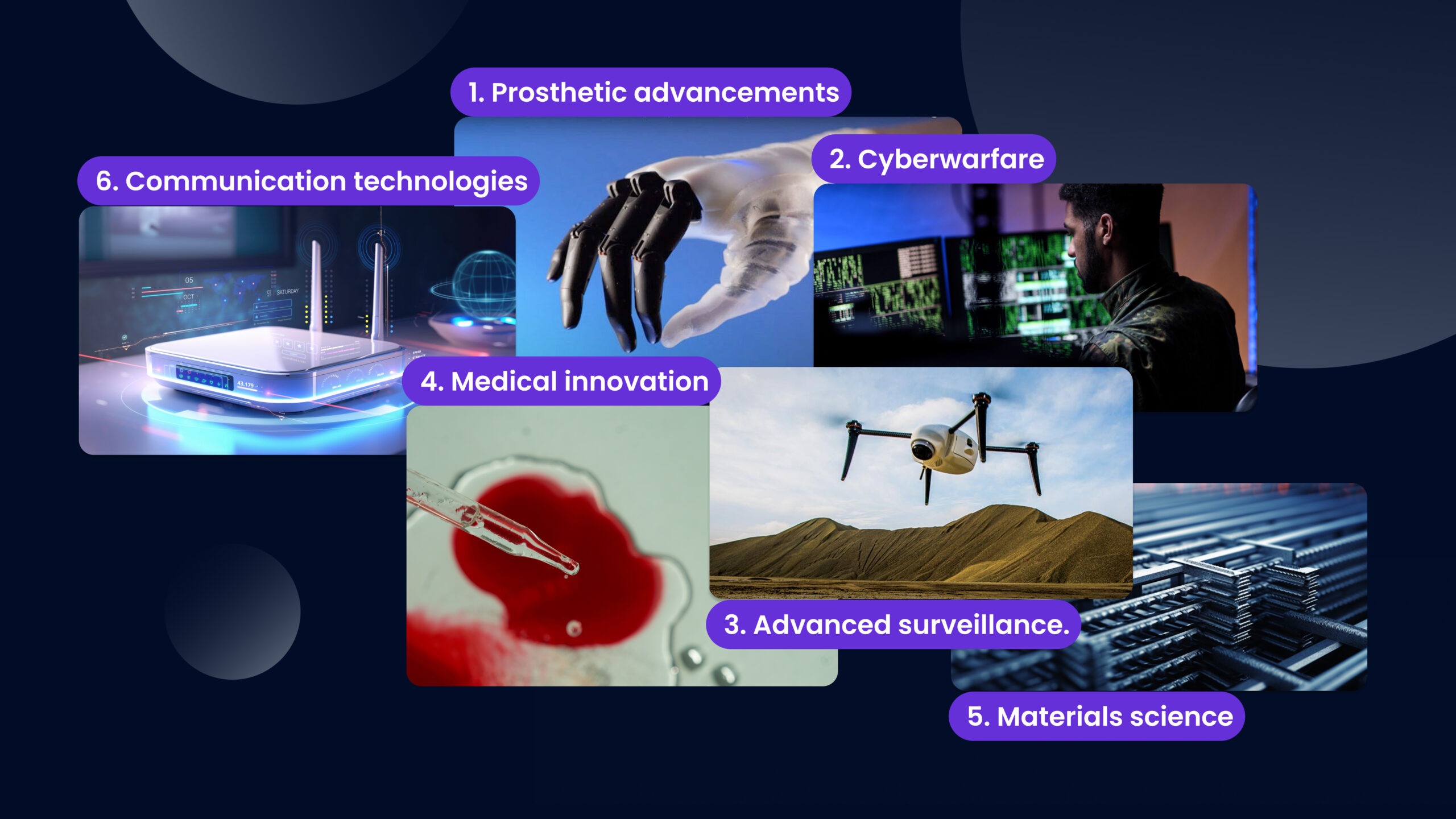
Warfare, as brutal and devastating as it is, often serves as a twisted incubator for technological advancements. The need to gain an edge on the battlefield pushes innovation in several key areas. Here are some niches we expect to boom in the next few years:
- Prosthetic advancements. The high number of casualties in the Russia-Ukrainian war has spurred significant advancements in prosthetic limbs. In years to come, we expect the development of biomimetic prosthetics that can replicate natural human movement and sensation and brain-computer interfaces that allow amputees to control prosthetic limbs directly with their thoughts, offering greater dexterity and control.
- Cyberwarfare. Modern wars are increasingly fought not just on land and air but also in the digital sphere. Both the Ukraine-Russia and Israel-Palestine conflicts have seen extensive cyberattacks targeting critical infrastructure. The result? Today, countries invest more than ever in developing sophisticated cyber defenses to protect their infrastructure from attacks. Offensive cyber capabilities are also being developed, raising concerns about escalation and potential unintended consequences.
- Advanced surveillance. Drones and AI-powered systems are extensively used for real-time battlefield surveillance and target identification. Facial recognition technology also becomes more sophisticated, which leads to better identification of enemy combatants and potential threats.
- Medical innovation. Wars always lead to advancements in battlefield medicine. Research is accelerated to develop new methods for treating injuries, improve blood products, and address the psychological impact of war. These advancements will have a positive ripple effect, benefitting civilian healthcare systems worldwide.
- Materials science. We should expect the development of stronger, lighter, and more durable materials for military applications, as has happened before during world wars and regional conflicts. They will be used in construction, transportation, and other industries.
- Communication technologies. The need for secure and reliable communication in war zones pushes innovation in communication technologies, which benefits civilian applications as well.
How do geopolitics affect the IT market?
“The market is overreacting about geopolitical events. The world won’t end,” Marko Papic states. He suggests considering geopolitics as a risk in investment, not more. But should we agree?

If we consider the COVID-19 pandemic as a massive geopolitical disruptor, we see that its effect on the IT industry and the labor market is still visible to this day, for example, post-pandemic layoffs that continue to spread among all tech giants and smaller companies.
Overall, the impact of geopolitics on the IT labor market is multifaceted. While some may face job displacement due to automation, others will see opportunities in emerging technologies. Here are some trends we expect to witness in the following decade:
- Trade tensions and political instability will disrupt global supply chains and talent pools. This can lead to companies focusing on cost savings and talent localization in specific regions.
- Offshoring to cheaper locations might become less attractive due to rising geopolitical risks. Companies might re-evaluate their IT talent strategies, bringing some operations closer to home.
- The focus on cost-cutting fuels the automation of routine IT tasks. This can lead to job displacement in certain areas, particularly for entry-level positions.
- However, this will create a demand for automation specialists, a need for specialists who can design, develop, and manage automation solutions.
- The ongoing chip war highlights the importance of semiconductor manufacturing and supply chain security. The USA and China invest heavily in domestic chip production, impacting the global talent market for chip designers and engineers.
- China’s significant investments in other IT areas besides chips, like quantum computing, will probably lead to massive breakthroughs.
- Companies seeking flexibility and cost savings might favor temporary projects with freelance developers, leading to a rise in short-term contracts and gig work.
- The paradox of human capital value. Despite automation, the need for skilled IT professionals remains high. Companies will need to understand that people are the true technology and need to invest in employee retention and development to stay competitive.
The world won’t end, as Papic says. However, it will change.

